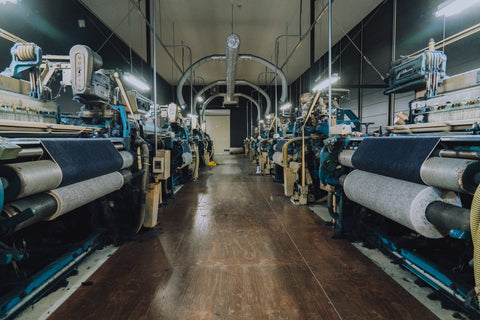
The Superior Craftsmanship of Japanese Denim: A Deep Dive
When it comes to denim, few names hold as much reverence and esteem as Japanese denim. The fabrics produced in the Land of the Rising Sun are often hailed as the pinnacle of denim craftsmanship, offering unparalleled quality, durability, and style. But what exactly sets Japanese denim apart from its global counterparts? Let’s explore the factors that contribute to its superiority.
A Legacy of Craftsmanship
Japanese denim traces its roots back to the post-World War II era, when Japan began to embrace Western fashion trends. The country’s artisans, known for their meticulous attention to detail, quickly became fascinated with the construction and durability of American jeans. They began to produce their own denim, but with a distinct twist: a commitment to quality that was deeply ingrained in Japanese culture.
High-Quality Raw Materials
One of the cornerstones of Japanese denim's superiority is the use of high-quality raw materials. Japanese denim mills often source the best cotton from around the world, including Zimbabwean and Egyptian cotton, known for their long, strong fibers. This high-grade cotton is spun into yarn that is both durable and soft, forming the foundation of a superior denim fabric.
Traditional Weaving Techniques
The weaving process is where Japanese denim truly shines. Many Japanese denim producers use vintage shuttle looms, which are slower than modern projectile looms but produce a tighter, more durable weave. This method results in denim with a distinct texture and character, often referred to as “selvedge” denim due to the self-finished edges that prevent unraveling.
Selvedge denim, which is highly prized among denim enthusiasts, is characterized by its unique, clean edge and the distinctive red or white line running along the seam. This type of denim is woven on narrow looms, producing a denser, heavier fabric that can withstand years of wear and tear.
Indigo Dyeing Tradition
Another hallmark of Japanese denim is the use of natural indigo dyeing techniques. Traditional indigo dyeing, which can involve multiple dips into the dye vat to achieve the desired depth of color, imparts a rich, vibrant hue to the denim. Over time, this indigo fades in a unique, personalized way, creating a patina that reflects the wearer’s lifestyle and habits.
Some Japanese mills also use rope dyeing, a process that ensures the indigo penetrates the yarn deeply but not entirely to the core, allowing for a more pronounced and aesthetically pleasing fade over time. This method is labor-intensive and time-consuming, but it significantly enhances the beauty and longevity of the fabric.
Cultural Commitment to Quality
Japanese culture places a high value on craftsmanship and attention to detail, principles that are evident in their denim production. From the meticulous selection of raw materials to the precision of the weaving and dyeing processes, every step is executed with a focus on quality. This cultural dedication ensures that each piece of Japanese denim is a work of art, designed to age gracefully and beautifully.
Innovation and Sustainability
While rooted in tradition, Japanese denim manufacturers are also at the forefront of innovation and sustainability. Many mills are adopting eco-friendly practices, such as using organic cotton, reducing water consumption in dyeing processes, and recycling materials. This blend of tradition and innovation ensures that Japanese denim remains relevant and respected in an increasingly eco-conscious world.
Conclusion
Japanese denim is celebrated not just for its superior quality, but also for the story it tells—a story of cultural dedication, meticulous craftsmanship, and a harmonious blend of tradition and modernity. From the high-quality raw materials and traditional weaving techniques to the time-honored dyeing methods and cultural commitment to excellence, Japanese denim stands as a testament to what can be achieved when passion and precision come together. For those who seek the best in denim, Japanese fabric is not just a choice; it's an investment in a legacy of quality and artistry.


